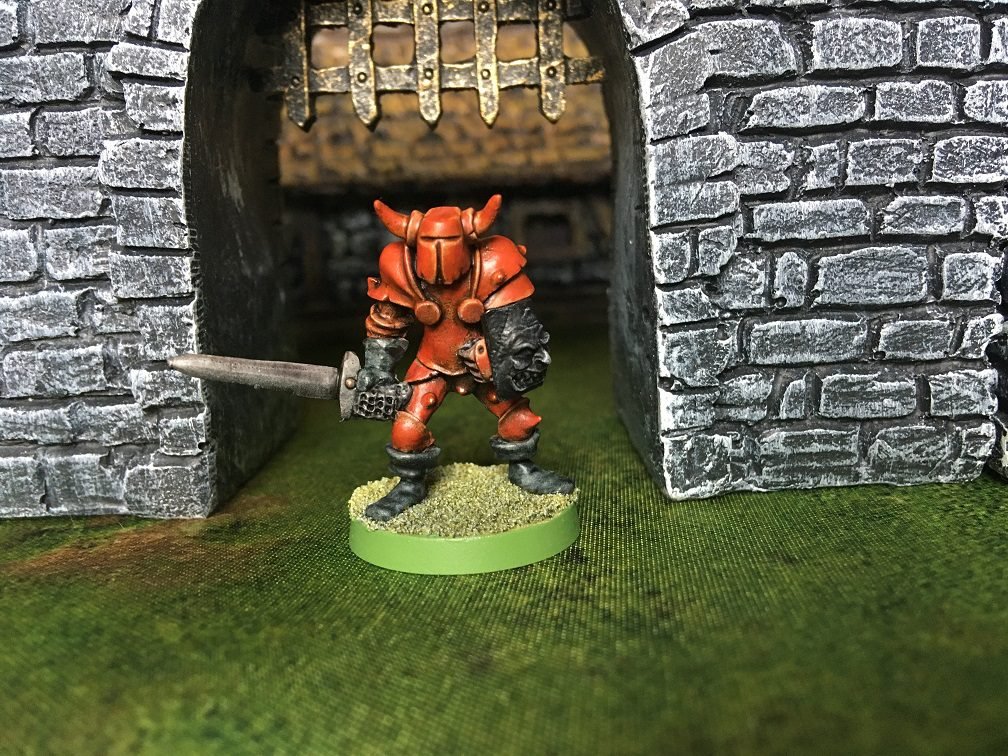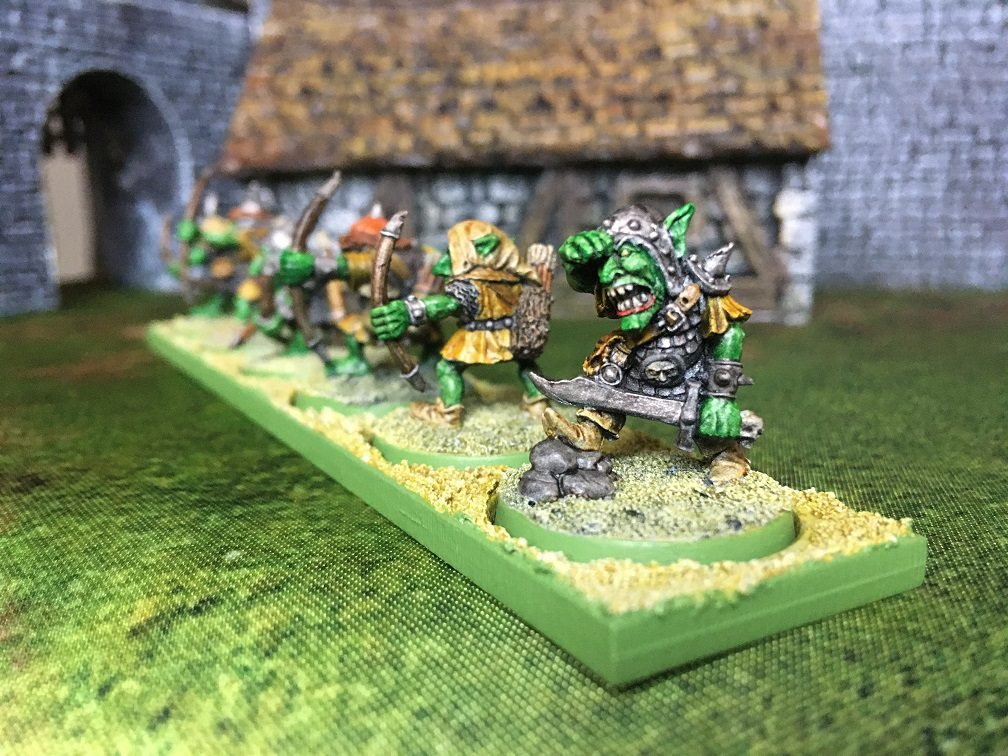For someone who’s sat alone playing Elder Scrolls: Skyrim for 1500+ hours, I still found the idea of solo wargaming “a bit weird”.

That was a limiting opinion, given that I’d only recently returned to the hobby. I didn’t exactly have a wealth of playing partner options, so I’d be buying and painting miniatures and terrain, pouring over rulebooks, and then… well, not very much, really. I took the “someday, I’ll have a really good game of this” approach.
See also: The Ultimate Guide to Solo, Co-op, & Narrative Wargaming
Then 2020 hit, and I realised that any difficulties I had in finding someone to play with had just gotten a whole lot harder.
I’d been reading the rulebook of Song of Blades & Heroes (find out more about it in my Miniature Agnostic Games roundup), and I’d also recently picked up Dungeon Saga. The latter actually came with a solo-play element and I thought I’d give it a shot (there are also some great adaptations available out there). I’d painted up all the in-box miniatures and created an Oathsworn Miniatures party to delve these dungeons with.
I also started playing out some warband skirmishes with the Sellswords and Spellslingers rules. During some of these early games, it began to click that solo wargaming came with a whole host of benefits that I’d been missing out on before.
No solo wargaming article is complete without mentioning Rangers of Shadow Deep either. This is one of the genre’s elite games, penned by the creator of the legendary Frostrgrave.
Powered by RedCircle
Check out our Rangers of Shadow Deep episode on the Tabletop Miniature Hobby Podcast.
1. There’s Always Time for Solo Wargaming
Do you work strange shift patterns and find yourself free between 2 am and 4 am most mornings? Playing solo only means you have to suit one person’s availability, and that’s you.
There’s no back and forth arranging dates and times, not to mention last minute cancellations. If you’ve got time, then you’ve got time to get a game in.
You might also save a lot of time in the setting up and tidying up, if you have the luxury of a play area that doesn’t need to resume its role as dinning table that evening. Your opponent won’t need to take their miniatures home, so games can be set up and played over days, or even weeks.
2. You Can Learn at Your Own Pace
Few people like to admit that they are a slow learner, but I definitely am. It takes a while for rules to sink in. I can pour over a rulebook for weeks, and think that I know the game inside out. Then, when I put it into practice on the tabletop, I start forgetting everything and it all goes to pieces.
I’m someone who learns best by doing. The problem was that I could seldom “do” because I rarely had anyone to play against. Solo wargaming has allowed me to gradually soak up the rules and quirks of the main game systems that interest me. When I make mistakes or need to spend 5mins looking through a rulebook, I’ve no paranoia that I’m ruining anyone else’s experience.
This relaxed “at your own pace” approach has given me a deeper understanding of how everything works in practice.

3. You Can Tell Better Stories
If someone is going to the trouble of meeting you for a game, there are usually certain expectations. One of those is that we’re going to face off with two forces similar in strength, and we’ll both have a realistic shot of winning.
I’ve always been more into the storytelling than the winning. I know that many wargamers do have great narrative-play experiences with their gaming pals. But it’s a tough sell to say to someone “here’s 4 halfling skirmishers, let’s see how long you can hold this hamlet against my minotaur horde.”
With solo wargaming, no setup or scenario is too unfair, or even, too silly. A single giant can take on hundreds of goblins and it doesn’t matter than one turn takes 30 seconds whilst the other takes 5 minutes. It’s often in these games that the most dramatic, cinematic, and downright hilarious moments occur, too.
4. You Can Test, Test, Test
Whether it’s a new army list, some home-brewed rules to a flawed but otherwise favourite ruleset, or the layout of some new terrain pieces, solo wargaming is the perfect testing ground.
Troubleshooting whilst playing solo means a smoother and more enjoyable game next time you’re able to get together with someone. It’s not just about fixing flaws though – you can optimise too. After a few solo games with your new medieval village terrain, you might come up with a layout that’s just perfect for kicking off your next campaign. So set up some solo games to answer the questions of “does this work?” and “how can this be even better?”.
Summary: Solo Wargaming
The purpose of this article isn’t to convince you that solo wargaming is better than playing against (or with) a friend. It’s just yet another layer of the hobby that many of us miss out on because it can initially seem “a bit weird”. But so can collecting and painting tiny toy soldiers, to be honest. You quickly get over other people’s perceptions – sometimes it’s harder to get over your own.
So why not try being an army of one (or would that be two armies of one?) and see what you think? If it doesn’t work out for you, it’s not like you’ve got far to go to get home 🙂
If you’re looking for some excellent solo rulesets to get started, be sure to check out Rangers of Shadow Deep, as well as Sellswords and Spellslingers!
Next up: 8 Tips to Rekindle Your Miniature Painting Motivation
